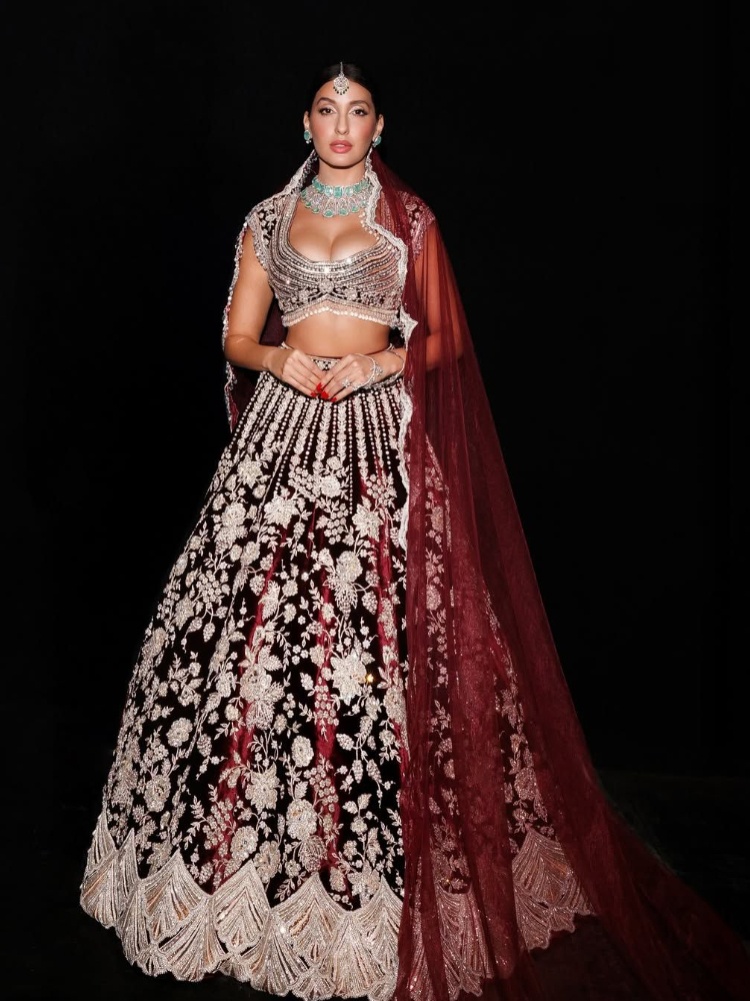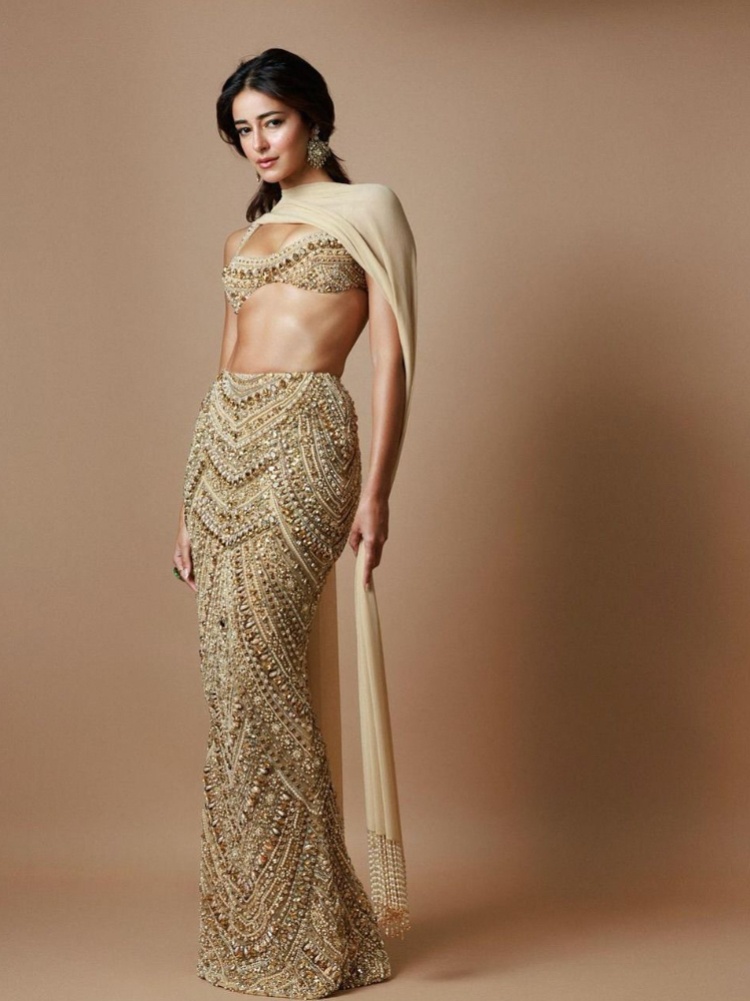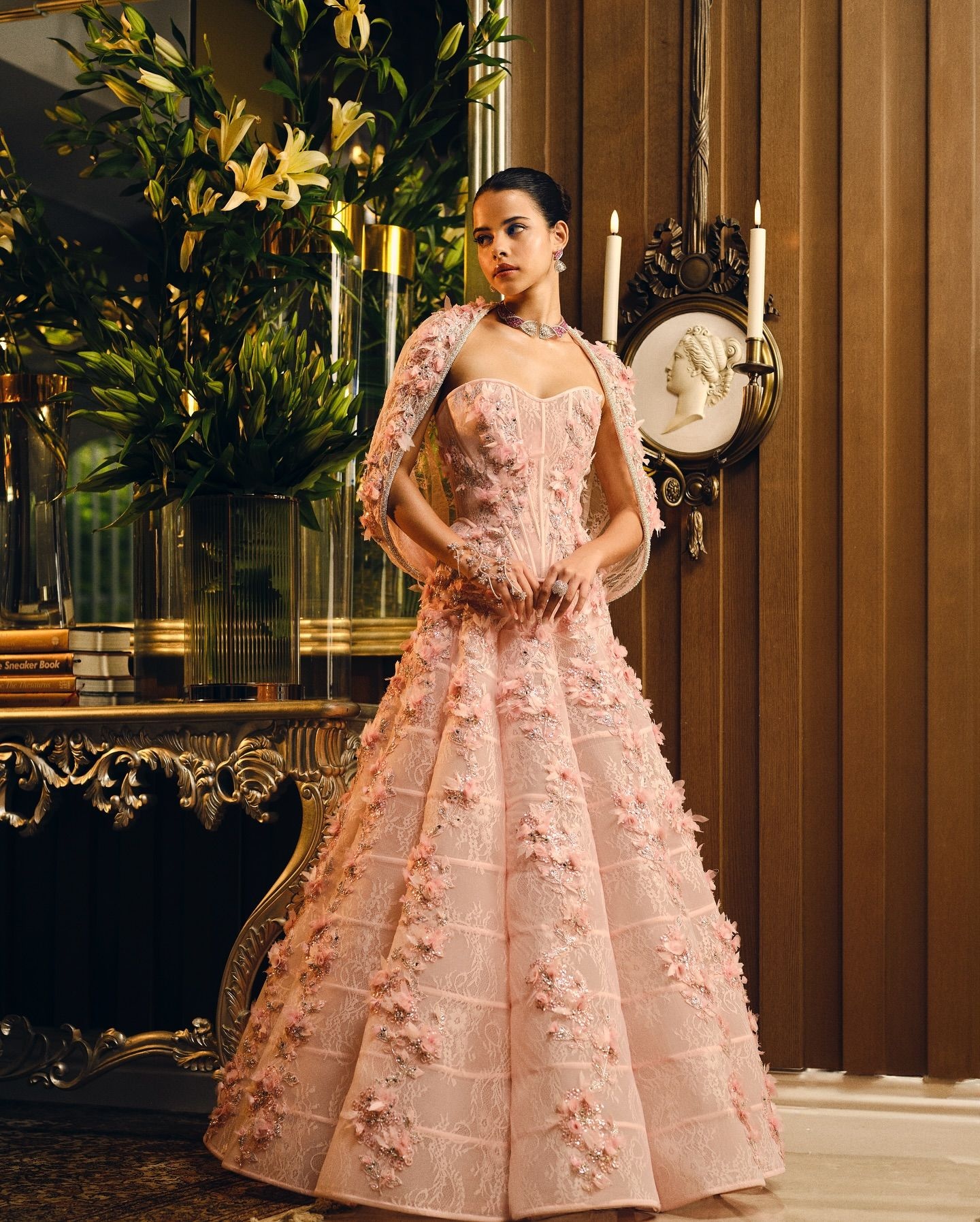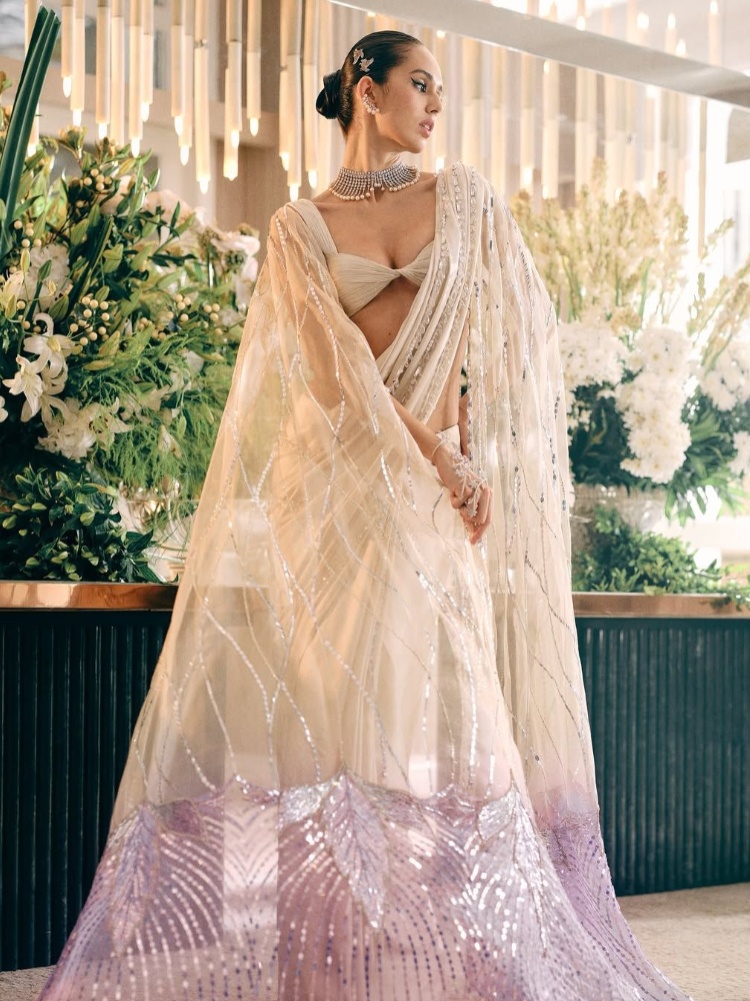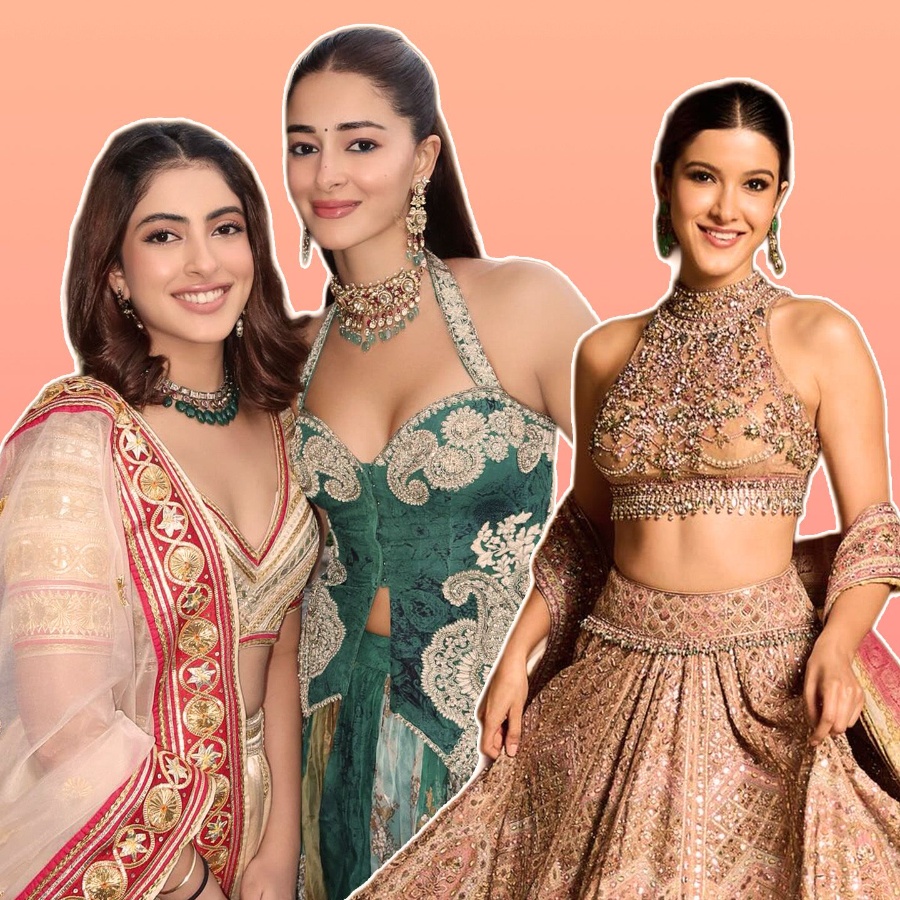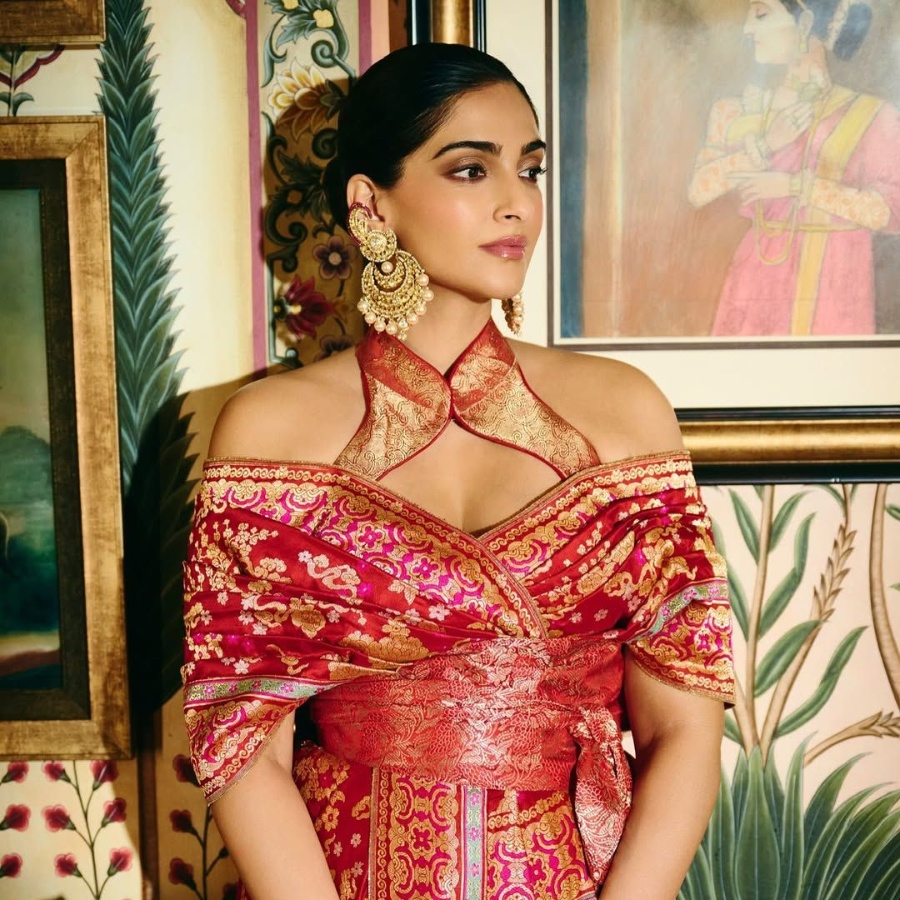If your bridal reference folder includes scenes from Kabhi Khushi Kabhie Gham and Yeh Jawaani Hai Deewani, you already know who shaped that visual language—Manish Malhotra. For over three decades, he has defined what Indian glamour looks like on and off-screen. His work introduced the sequinned sari as evening wear, made the backless blouse a red-carpet norm, and brought couture-level construction to bridal fashion. Every surface, from metallic zardosi to mirror-finish embroidery, is engineered for precision. His pieces are less about nostalgia and more about continuity, a design system that keeps Indian couture current while remaining recognisable.
Malhotra’s influence on Indian bridal fashion is largely technical. He standardised the fit of the modern lehenga, redefined how sequins are mapped to move with the body, and aligned couture finishes with film-driven glamour. His visual codes, like metallic embroidery, sculpted draping, and structured blouses, have become part of the national bridal vocabulary. What began as film styling has become the visual grammar of modern Indian weddings. Here’s how to identify the four archetypes that dominate his couture calendar.
The original reference point
This is Malhotra’s most recognisable template. The silhouette follows classic couture codes: a full lehenga with structured flare, zardosi-embroidered panels, and a dupatta positioned with symmetry and weight. Borders are proportionate, motifs are evenly mapped, and fabrics (velvet, organza, or tulle) retain architectural form. Jewellery is traditional yet refined, featuring kundan and uncut diamonds, never mixed with metals. The look is deliberately chic; it’s the calibrated reference for what an “Indian bride” looks like in fashion media.
Structure over sway
Born from Malhotra’s later couture collections, this look combines tailoring with drape. Corseted blouses, boned bodices, and pre-draped saris replace layered volume with internal structure. Embroidery is mapped like surface design, with laser-cut sequins, bead grids, and tonal threadwork for definition. Colours stay in the metallic spectrum: champagne, pewter, and blush. Styling is pared back with minimal jewellery, sleek hair, and neutral makeup. It’s the most technically forward version of the MM bride.
